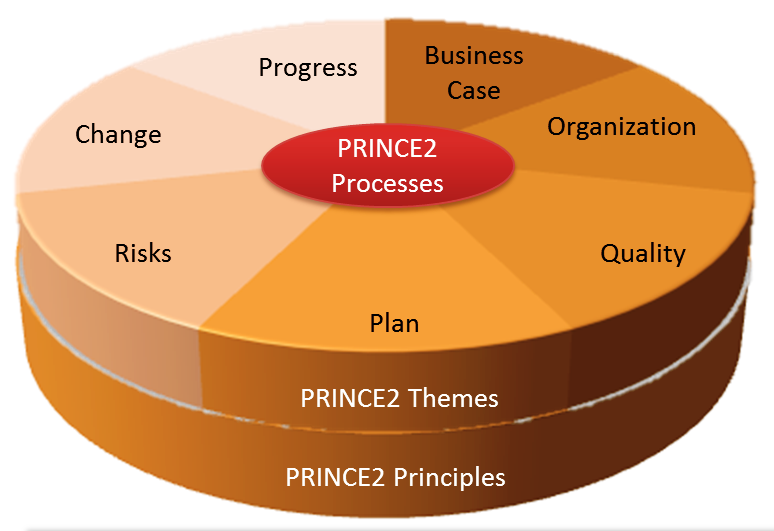A thorough project management training course, the PRINCE2 (Projects in Controlled Environments) course provides professionals with the knowledge and abilities to successfully manage projects in controlled environments. AXELOS now oversees the management of the PRINCE2 methodology, which was created by the UK government and offers a structured and scalable approach to project management. This article examines the core ideas and frameworks given in the PRINCE2 course, emphasizing the importance of these ideas for improving project management procedures and producing effective results.
Key Concepts in a PRINCE2 Course
The PRINCE2 course training begins by presenting participants with the seven guiding principles that form the foundation of the methodology. As the cornerstone of PRINCE2, these tenets direct project managers in their decision-making throughout the course of a project. The guidelines include ongoing business rationale, which guarantees that projects stay aligned with the goals of the firm and add value. Learning from experience pushes project managers to use lessons learned from previous initiatives to enhance current projects. The following key concepts are typically covered in a PRINCE2 Certificate training course.
Project management courses provide valuable insights into effectively planning and managing projects. They teach essential methods like Agile and Waterfall, covering skills such as scope management and team leadership. These courses, available both in-person and online, offer certifications like PMP, enhancing career opportunities. They equip individuals across industries to meet deadlines, allocate resources, and ensure quality project delivery.
1. PRINCE2: Roles and Responsibilities
The roles and responsibilities of project team members are clearly defined, encouraging accountability and effective communication. The project management techniques of manage by stages and manage by exception support a stage-by-stage methodology that enables controlled progress and prompt correction of errors. The necessity of identifying and delivering project deliverables is emphasized by the focus on products, and each project’s specific characteristics can be accommodated by customizing PRINCE2 to the project context.
2. PRINCE2 themes:
The seven topics that must be consistently addressed during the project lifecycle are covered in depth in the PRINCE2 course. These themes serve as a thorough foundation to guarantee that crucial project management components are properly managed. The business case, which supports the project’s viability and advantages, is one of the themes. Clarifying roles and duties is a priority for the organisation to provide efficient project governance. Project deliverables must adhere to the necessary standards, and quality assures this. Blueprints include the creation of thorough plans for every phase of a project. Project risks must be identified, evaluated, and managed as part of risk management. Change control makes certain that modifications are appropriately considered and accepted. Finally, progress monitoring keeps track of how projects are performing in comparison to planned, enabling wise decision-making.
3. PRINCE2 processes:
The seven processes that outline the project management process in steps are covered in the PRINCE2 course. These procedures offer a planned and managed framework for carrying out projects. Creating the project initiation papers and obtaining the required approvals are necessary before a project can begin. Creating a thorough project strategy and securing project resources are the main priorities when starting a project. By obtaining the requisite project board approvals, project management guarantees that a project is viable and in line with business goals. Managing project work packages, monitoring development, and resolving problems and hazards are all part of controlling a stage. Coordinating the production and delivery of project goods is the focus of managing product delivery. Managing a stage boundary entails assessing the status of the project and securing approval for the subsequent stage. An official project termination process and lessons learned for future improvement are involved.
4. PRINCE2 customization:
The PRINCE2 training emphasises the value of customising the approach to meet the unique needs and circumstances of the project. Although PRINCE2 offers a strong and uniform structure, it is not a one-size-fits-all method. Project managers are encouraged to modify PRINCE2 to meet the scope, organisation, and size of the project. With this flexibility, project managers may balance adhering to the PRINCE2 principles with adjusting to the particulars of each project setting.
5. PRINCE2 Advantages:
Participants learn about the many advantages of using PRINCE2 in project management throughout the course. Project control is improved as a result of the organised and controlled approach offered by PRINCE2, ensuring that projects stay on schedule and within budget. The possibility of project failure is decreased via the identification and mitigation of potential hazards through effective risk management. Better communication and collaboration amongst project stakeholders are encouraged by the clear description of roles and duties. Furthermore, by placing a strong emphasis on the business case, initiatives are regularly assessed for their value delivery and alignment with organisational goals. Project managers may efficiently manage changes by avoiding interruptions to the project scope and objectives thanks to PRINCE2’s emphasis on change control. Additionally, progress monitoring provides early deviation detection, allowing for fast corrective action.
6. Practitioner Level Examination:
At the end of the PRINCE2 course, participants have the option to sit for the Practitioner level exam. This test evaluates candidates’ practical application of PRINCE2 concepts, demonstrating their proficiency in using the methodology to manage projects successfully. The competence to lead projects utilising the best practises of PRINCE2 is further validated for candidates by passing the Practitioner test.
7. Concepts in Practice:
The PRINCE2 training extends beyond theoretical understanding by offering opportunities for actual application. Participants gain knowledge of how to apply PRINCE2 concepts, themes, and procedures in various project environments through case studies, simulations, and real-world scenarios. Their capacity to handle projects successfully in practical settings is improved by this practical experience.
8. Strong Focus on Project Governance:
A key component of PRINCE2 is project governance, which makes sure that projects are routinely assessed, managed, and in line with strategic goals. The programme gives project managers the skills they need to create solid governance frameworks, include stakeholders, and enable open decision-making throughout the length of a project.
9. Standardization of Project Management Practices:
Organizations can uniformly apply project management techniques to all of their projects by following the PRINCE2 framework. This standardisation boosts productivity, fosters better teamwork, and streamlines project delivery, all of which contribute to continuous project success.
Enhancing communication and reporting is a key component of project management, which is something the PRINCE2 training emphasises. Participants gain knowledge on how to write succinct project reports, conduct fruitful project meetings, and keep lines of communication open with stakeholders. Between project teams and stakeholders, greater communication creates stronger collaboration and alignment.
10. Continuous Improvement and Lessons Learned:
Through the use of lessons learned, PRINCE2 promotes a culture of continuous improvement. Project managers will learn how to carry out in-depth project evaluations, record lessons gained, and incorporate improvements in subsequent projects in this course. With time, project success rates rise as a result of this iterative approach’s guarantee that projects profit from prior learning.
11. Worldwide Recognition and Career Opportunities:
PRINCE2 is respected and valued throughout many industries on a global scale. Project managers’ credentials are strengthened by completing the PRINCE2 course and earning certification, which can lead to new employment options and increase employability globally.
12. Alignment with Existing Project Management Standards:
Because PRINCE2 is made to complement other project management frameworks and standards, it can be used to businesses who currently employ Agile or Six Sigma. The training teaches project managers how to combine PRINCE2 with current methods to produce a productive and efficient project management strategy.
The PRINCE2 course places a strong emphasis on the value of teamwork and motivation in project management. The success of a project is largely dependent on the collaborative and high-performing team culture that project managers understand how to build among their team members.
13. Resource and Risk Management:
Project managers are given the tools they need by PRINCE2 to manage resources and risks efficiently. In order to assure project success, participants learn how to identify and manage potential risks, maximise resource usage, and proactively address project difficulties.
Summary
The PRINCE2 course is a thorough training programme that introduces project managers to the fundamental ideas and structures required for effective project management. Professionals may better manage projects with a focus on providing value, managing risks, and preserving control throughout the project lifecycle by understanding the PRINCE2 principles, themes, and processes. Project managers can use the technique in a variety of project environments while taking into account the unique requirements of each project according to the course’s emphasis on adapting PRINCE2. Participants can demonstrate their competence and competency in utilising PRINCE2 to flourish in their project management responsibilities by taking the Practitioner level test. In the end, the PRINCE2 training helps to improve project management procedures, guarantee project success, and produce positive results for businesses and stakeholders.




